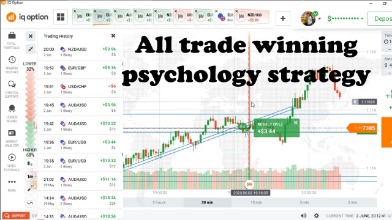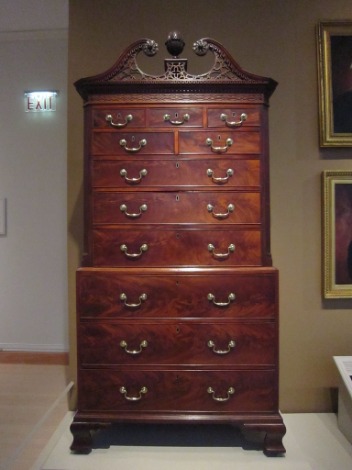
Trading financial products carries a high risk to your capital, particularly when engaging in leveraged transactions such as CFDs. It is important to note that between 74-89% of retail investors lose money when trading CFDs. These products may not be suitable for everyone, and it is crucial that you fully comprehend the risks involved.
Harami Cross: Definition, Causes, Use in Trading, and Example – Investopedia
Harami Cross: Definition, Causes, Use in Trading, and Example.
Posted: Sun, 26 Mar 2017 07:48:41 GMT [source]
The EMA plus Fibonacci strategy is strongly profitable, but sometimes the fast EMA could knock you out of a winning trade relatively early. This is the power of candlesticks and using various methods to confirm each other. Bulls who have made gains in the stock may be taking a breather to either accumulate more shares or sell out of their existing positions. The large preceding candle would signify climactic conditions in that regard.
By using indicators like Fibonnaci extensions and retracement… The Bearish Harami above displays how a reversal pattern is formed using the Harami candlestick pattern with the reversal occurring at the medium term high. Reversal signals are often stronger at significant price levels (support, resistance, highs and lows).
AskTraders Summary: The Harami Candlestick Pattern
The Bullish Harami above represents a continuation of the current upward trend for the EUR/USD pair. This is important to remember because not all Harami patterns indicate reversals. CFDs are complex instruments and come with a high risk of losing money rapidly due to leverage.
The doji is completely contained within the prior candlestick’s body. The harami cross pattern suggests that the previous trend may be about to reverse. The bullish pattern signals a possible price reversal to the upside, while the bearish pattern signals a possible price reversal to the downside. In this article, we’ve had a look at the bullish harami candlestick pattern. We’ve explored its meaning, and showed you how you could improve the pattern by using different filters. In addition to that, we’ve also covered a couple of example trading strategies.
- Bearish harami is a reversal candlestick pattern and the counterpart of the bullish harami.
- For example, a bullish harami that’s formed on a day that’s extra bullish might not be as accurate as one forming on a bearish day.
- Investors looking to identify harami patterns must first look for daily market performance reported in candlestick charts.
- A bullish Harami occurs at the bottom of a downtrend when there is a large bearish red candle on Day 1 followed by a smaller bearish or bullish candle on Day 2.
- This provided confirmation and an opportunity to exit longs or enter short positions.
The Harami Japanese candlestick pattern can occur in both bullish and bearish markets, which means that the formation can be useful in any environment. A bullish Harami pattern indicates an upward price reversal, whereas the bearish Harami pattern indicates a downward price reversal may be possible. Bullish and bearish haramis are among a handful of basic candlestick patterns, including bullish and bearish crosses, evening stars, rising threes, and engulfing patterns.
Forex, Gold & Silver:
Now, if you know these tendencies you could take those into account in your analysis. For example, a bullish harami that’s formed on a day that’s extra bullish might not be as accurate as one forming on a bearish day. The positive gap and bullish candle could just have been the result of the extra bullish sentiment of that period, and just be a short pullback, rather than a reversal of the trend. In this article, we’re going to have a closer look at the bullish harami pattern. We’re going to cover its meaning, how you can improve its accuracy, and provide some examples of trading strategies that rely on the bullish harami pattern. The bearish harami pattern appears at the top end of an uptrend, allowing the trader to initiate a short trade.
- Now, another way of gauging the accuracy of a bullish harami is to compare the range of the pattern itself to surrounding candles.
- The size of the second candle determines the pattern’s potency; the smaller it is, the higher the chance there is of a reversal occurring.
- In this case, you will need an overbought signal from the stochastic.
- A Marubozu Candlestick pattern is a candlestick that has no “wicks” (no upper or lower shadow line).
The opposite of the bearish harami is the bullish harami which appears at the top. Now let’s view another example where market consolidated for few days before going down. The following example is Apple Daily chart and as we can see there are two bearish harami’s appeared on this chart. Once the pattern is identified, traders will wait for a break of the pattern’s high and then enter short when the price falls below that high, setting a stop loss of one ATR. When the first candle of the bullish harami is formed, there is no sign of bullish market sentiment.
Bullish Harami Bearish Mean Reversion Trade Setup
The confirming candle is used as a tool to tell traders if the smaller trailing gives life to a reversal or follows the trend with the starting candle. The popularity of the Harami pattern and other candlestick patterns is due to the ability to catch a reversal at the most opportune time with tight risk. This will allow traders to have very favorable risk-reward ratios. According to the book Encyclopedia of Candlestick Charts by Thomas Bulkowski, the Evening Star Candlestick is one of the most reliable of the candlestick indicators.

On the appearance of the harami pattern, a trend reversal is possible. There are two types of harami patterns – the bullish harami and the bearish harami. For expert traders, this would be a strong signal to sell the asset through the initiation of short positions. The first candlestick is a long up candle (typically colored white or green) which shows buyers are in control.
Candlestick Pattern
In addition, the pattern may be more significant if occurs near a major resistance level. Other technical indicators, such as an RSI moving lower from overbought territory, may help confirm the bearish price move. For a bullish harami cross, some traders may act on the pattern as it forms, while others will wait for confirmation. In addition to confirmation, traders may also give a bullish harami cross more weight or significance if it occurs at a major support level.
Now that we have covered the basics of the https://g-markets.net/stick pattern, it’s now time to dive into tradeable strategies. Please note all of the subsequent examples are on a 5-minute time frame, but the rules apply to other time frames just as well. The bullish engulfing candlestick pattern and bullish harami patterns are almost identical but with their candles flipped. The only difference is that the second candle engulfs the first in the bullish engulfing, whereas the first candle engulfs the second in the case of the bullish harami. The first candle is usually long, and the second candle has a small body. The second candle is generally opposite in colour to the first candle.
The price breaks the yellow support in a bearish direction giving us the confidence to hold our short position. But the important point was the fact that we saw other candlestick formations confirm what the harami cross was telling us. A sell signal could be triggered when the day after the bearish Harami occurred, the price fell even further down, closing below the upward support trendline. When combined, a bearish Harami pattern and a trendline break might be interpreted as a potential sell signal. This pattern is not as reliable as bearish engulfing pattern and dark cloud cover. Due to its small second candle, a bearish harami requires more signals, or a few but potent.
Bullish Harami: Definition in Trading and Other Patterns – Investopedia
Bullish Harami: Definition in Trading and Other Patterns.
Posted: Sun, 26 Mar 2017 00:36:12 GMT [source]
With its creation, the market put in its current high then quickly descended 481 pips. Several traders attach more importance to the Harami cross candle pattern compared to the regular Harami pattern. Just like the normal Harami patterns, there are also two types of Harami cross patterns–Bullish and Bearish. This Bearish Harami should be confirmed with resistance or any other chart or candlestick pattern. One should note that the important aspect of the bearish Harami candlestick is that prices gapped down on Day 2 and also they were unable to move higher back to the close of Day 1.
How Do You Trade on a Bearish Harami?
The first candlestick is the mother with the child candlestick fitting within the body of the prior. Sometimes a pattern that’s formed with high volatility is more reliable than one that’s formed in low volatility conditions. What works best depends on the market and timeframe you’re trading, and you should test and see what works the best for you. During the rest of the day selling pressure tries to push the market lower, but buyers are there each time to prevent the market from heading lower. The bulls even manage to push prices a little higher, albeit not above the open of the previous bar.

Recent Comments